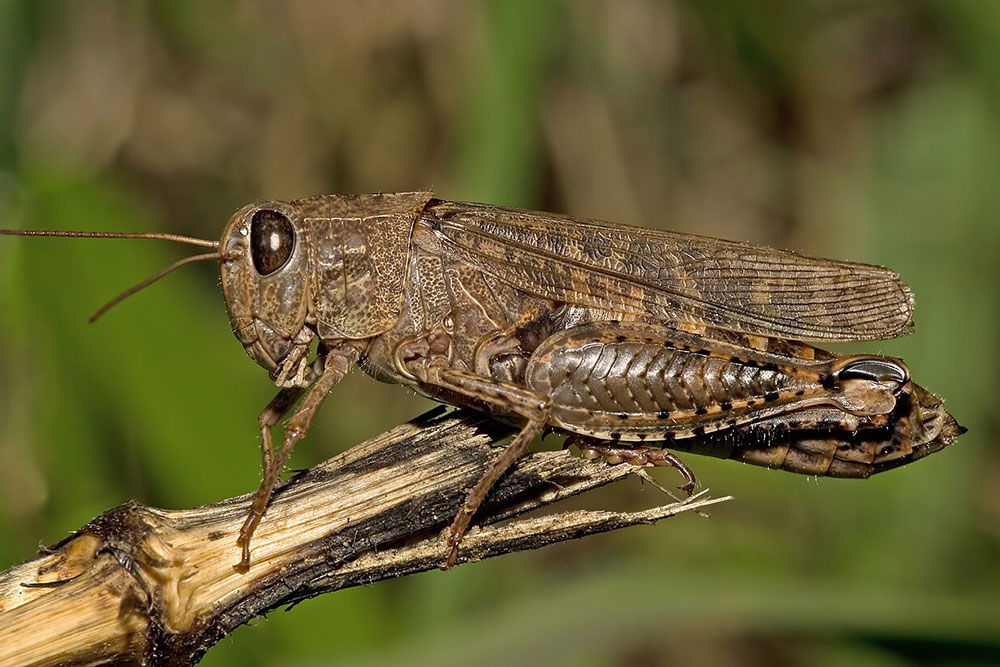
The Italian locust, known scientifically as Calliptamus italicus, is one of the most widespread and economically significant grasshopper species in Europe. It belongs to the Acrididae family and is commonly found in the dry grasslands and steppes of southern and central Europe, especially in Italy.
This insect has gained attention due to its capacity to form swarms and devastate crops in certain conditions. Understanding its biology and behavior is crucial to managing its population and reducing agricultural damage across Italy and beyond.
Calliptamus italicus is part of the Orthoptera order and Acrididae family, which includes short-horned grasshoppers and locusts. It is relatively small compared to true locusts, with adults measuring between 14 and 26 millimeters depending on sex and environmental conditions.
The species displays sexual dimorphism, with females being significantly larger than males. Coloration ranges from grayish brown to reddish tones, with hind wings often tinted pink or rose when in flight, giving it the nickname “rosy-winged locust.”
The Italian locust is native to the Palearctic region and thrives in arid and semi-arid landscapes such as dry pastures, stony hills and agricultural fallow fields. In Italy, it is commonly observed in provinces with Mediterranean and continental climates, particularly in central and southern regions.
Its range extends from Portugal and Italy across southeastern Europe into Central Asia and even parts of China. This wide distribution is a testament to its adaptability and resilience in diverse environmental conditions.
Calliptamus italicus undergoes incomplete metamorphosis, progressing through three main stages: egg, nymph and adult. Eggs are laid in egg pods in dry, sandy soils from late summer to early autumn and overwinter in the ground until spring.
Nymphs emerge from May onward and pass through five instars before reaching adulthood by July or August. Maturation is influenced by climate, with warmer temperatures accelerating development and increasing reproductive success.
The Italian locust is polyphagous, feeding on a wide variety of grasses and herbaceous plants, including wheat, alfalfa and wild flora. In moderate numbers, it plays a natural role in controlling plant overgrowth and promoting ecological diversity in open steppe environments.
However, when population density becomes high, especially during hot and dry summers, it shifts from a beneficial grazer to a destructive pest. In outbreak years, swarms can strip entire fields and pastures, leaving behind barren land and triggering local ecological imbalance.
Outbreaks of Calliptamus italicus occur cyclically and are heavily influenced by weather patterns, particularly drought and heat waves. Dry summers and mild winters increase egg survival and reduce competition, resulting in rapid population explosions the following year.
In Italian provinces like Sardinia and parts of Emilia-Romagna, outbreaks have been recorded with swarms affecting tens of thousands of hectares. These events lead to considerable damage to cereal crops, pastures and even vineyards, prompting emergency response from agricultural authorities.
When conditions favor reproduction, the Italian locust becomes a major agricultural threat in both southern and central Italy. Farmers face losses in cereals, vegetables and forage crops as locusts devour everything in their path during outbreaks.
Efforts to contain these pests can cost millions in monitoring, pesticides and ground treatments, particularly in regions dependent on dryland farming. Additionally, secondary costs such as reduced soil health and delays in replanting contribute to long-term productivity losses.
Italian agricultural agencies and farmers employ a range of control methods to reduce locust populations and protect crops. These include early detection through ground surveys, egg pod monitoring and targeted pesticide applications before swarming occurs.
Biological control options are being explored, such as fungal pathogens and natural predators, to provide more sustainable solutions. Integrated pest management strategies focus on prevention, habitat disruption and collaboration between farmers and environmental authorities.
As climate change brings longer periods of drought and rising temperatures, conditions for Calliptamus italicus are becoming increasingly favorable. Researchers warn that outbreaks may become more frequent and widespread in Italy and other parts of southern Europe.
Areas once considered marginal for the species, such as parts of northern Italy, may now be at risk due to shifting climate patterns. This raises concerns for future agricultural planning and demands greater investment in early warning systems and adaptive management.
Italian entomologists and agricultural researchers have played a key role in understanding the biology and control of Calliptamus italicus. Field studies and modeling projects help predict outbreak timing and guide resource allocation for intervention measures.
Institutes such as the Italian National Research Council and regional universities collaborate on long-term monitoring programs. These efforts are crucial for developing sustainable solutions that reduce economic losses while preserving environmental health.
Despite its pest status during outbreaks, the Italian locust has a role in natural ecosystems as a food source for many species. Birds such as kestrels and shrikes, along with reptiles and amphibians, rely on locusts as a seasonal protein source.
In balanced populations, Calliptamus italicus contributes to nutrient cycling and promotes plant succession in overgrazed areas. Maintaining this balance is key to preserving the health of grassland ecosystems and biodiversity in the Italian countryside.
The Italian locust, Calliptamus italicus, is both a fascinating native species and a formidable agricultural challenge in Italy. Its biology, adaptability and response to climate trends make it a species worth monitoring closely as environmental conditions evolve.
Balancing pest control with ecological preservation is essential for the future of Italian agriculture and biodiversity. With continued research and proactive management, Italy can maintain resilience in the face of this persistent but natural element of its environment.

More Details